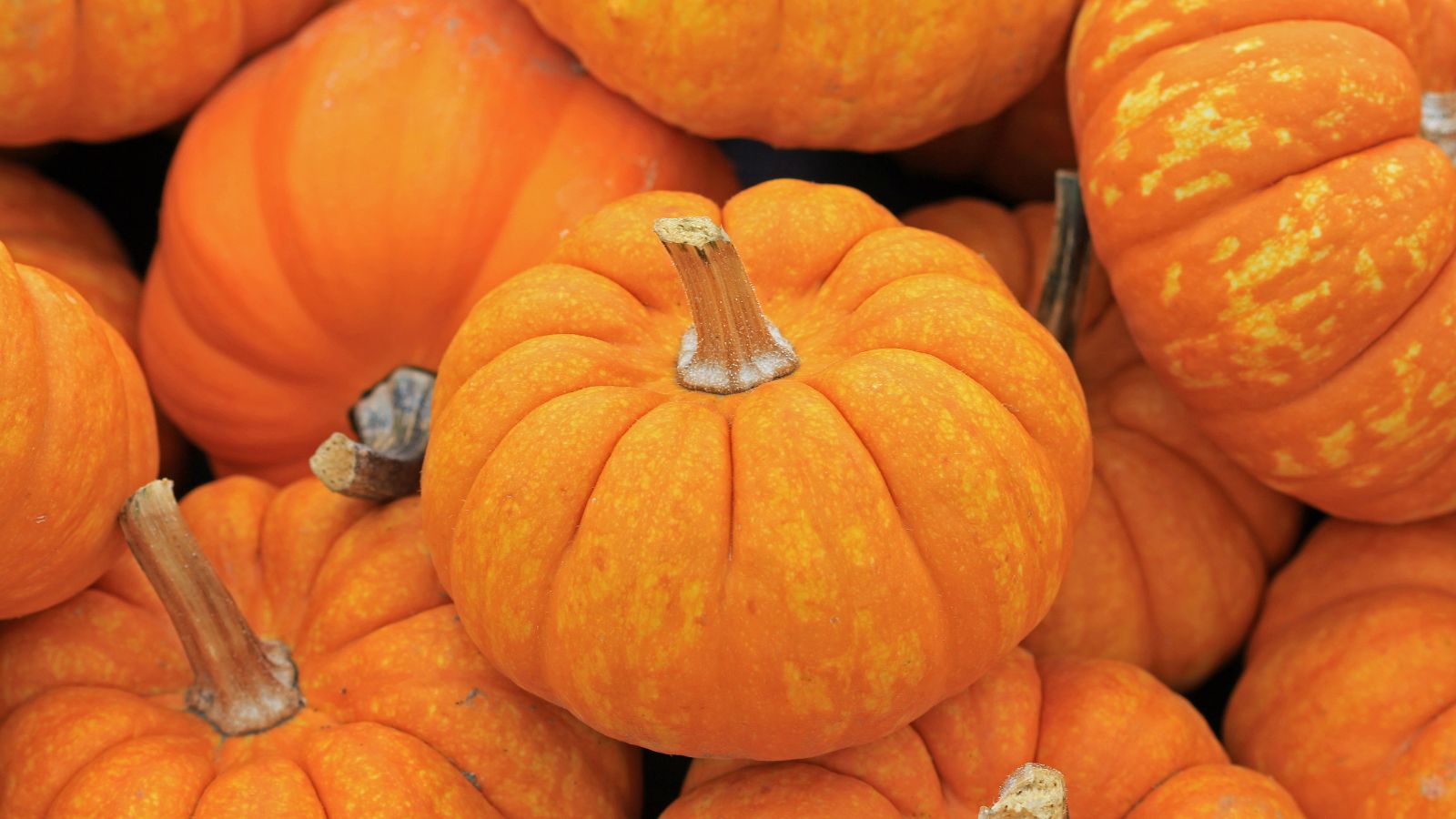
Pumpkin Patch Success: When Should You Plant Pumpkin Seeds?
Photo Credit: Canva Pro
Planting pumpkin seeds at the right time will help you get healthy pumpkins ready for fall. When should you plant pumpkin seeds and how to plant them, how long they take to grow, and the best months to start are all explained in this article. The soil needs, spacing, and harvesting tips are also discussed.
This article will help you grow pumpkins that are good for carving or cooking, no matter how much gardening experience you have.
🔥 Limited Batch – Shop Pumpkin Spice Cookies!
When Should You Plant Pumpkin Seeds?
Photo Credit: Canva Pro
When should you plant pumpkin seeds? An excellent fall harvest depends on planting at the right time. In order to do well, pumpkin plants need warm weather and lots of sun.
For the best results, know when to plant pumpkin seeds, whether you want to make a jack-o'-lantern or a fresh pumpkin pie. Get started by looking at the weather and soil temperature in your area. Planting pumpkin seeds outside in late spring to early summer is best, depending on your USDA zone.
Understanding the Best Timeframe for Fall Harvests
It is best for pumpkin seeds to grow in warm soil. Planting too early and the seeds won't germinate well, and planting too late cuts the growing season short.
-
Best planting window: Late May through the beginning of July
-
Soil temperature: Minimum temperature of 70°F for quick growth
-
Common risk: In cold soil, sprouting may be delayed. Powdery mildew, however, is promoted by poor airflow and humid conditions.
Environmental Conditions to Consider Before Planting
Vegetable pumpkins need a lot of room, sunlight, and air flow. Pests like squash bugs and cucumber beetles can be avoided by keeping the soil healthy and leaving empty spaces between plants.
-
Sunlight needs: 6 to 8 hours of full sun a day
-
Soil: Land that drains well and is loose, with a pH between 6.0 and 6.8
-
Tip: Weed the garden two weeks before planting to reduce competition and allow the soil to settle before sowing seeds.
-
Storage tip: Save pumpkin seeds from a fresh pumpkin and keep them dry until planting
What Are the Best Months to Plant a Pumpkin Seed?
Photo Credit: Canva Pro
Your location will determine the best months to plant pumpkin seeds. Planting pumpkins in early summer gives you time to grow them before the first fall frost in most parts of the U.S. Starting 90 to 120 days before the date you want to harvest, you can get pumpkins ready by October.
Region-Based Planting Strategies
Where you live needs a different planting schedule. Knowing your USDA zone will help you choose the right time to plant pumpkin seeds.
-
Northern zones: The end of May or the beginning of June
-
Southern zones: April through the beginning of May
-
Time to maturity: Depending on the type of pumpkin, 90 to 120 days
Weather and Soil Warmth Guidelines
Soil temperature is very important. Conditions like cold or wet ground can kill seeds or slow their growth. Do not plant during long periods of rain.
-
Warm soil: The temperature must be above 70°F for seeds to germinate.
-
Soil check: Garden thermometers are good to use.
-
Bonus tip: Get pumpkin seedlings started inside if spring frost lasts longer.
When Should You Put Pumpkin Seeds in the Ground?
Photo Credit: Canva Pro
To grow a successful pumpkin patch, you need to know when to plant pumpkin seeds. For a fall harvest, plant pumpkin seeds between late May and early July, depending on your region.
If you want to get pumpkins in time for Halloween, you need to be on time. Whether you plant sugar pumpkins or another kind of pumpkin, make sure they have enough time to grow so they can be used instead of store-bought pumpkins.
Best Planting Window for a Fall Harvest
-
Ideal planting time: Late June to early July
-
Target harvest: From the middle of September to the end of October
-
Perfect for: Sugar pumpkins and pumpkins used for decoration
Key Tips for Ground Preparation
-
Soil needs: Loose, well-drained soil that gets full sun
-
Planting method: Plant seeds right in the ground.
-
Use: If there is room, rows, or small hills
-
Reminder: Pick the right kind of pumpkin for your needs and climate to make sure they grow well.
How Long Does It Take for Pumpkin Seeds to Grow?
Photo Credit: Canva Pro
It takes different types of pumpkins, different types of soil, and different climates for pumpkin seeds to grow. Plants that grow pumpkins need a long growing season, about 90 to 120 days.
Depending on when your last frost date is, you should start harvesting pumpkins early enough for fall decor or Halloween. The schedule is very important, whether you're growing big pumpkins or sugar pumpkins.
Typical Growth Timeline
To get the best results, plan your planting schedule around how long pumpkins take to grow.
-
Growth range: 90 to 120 days after planting
-
Fast-growing types: Sugar pumpkins and small varieties typically reach maturity in about 90 days.
-
Long-growing types: Growing giant pumpkins and heirloom pumpkins takes 110 to 120 days.
-
Planting tip: For exact days to maturity, check the seed packet.
Identifying Ripeness and Harvest Timing
Pumpkins are ready when the rind is hard, the skin resists denting with a fingernail, and the stem has turned brown and woody. Hold off on picking too quickly; fruit that isn't fully developed won't keep well.
-
Ripeness signs: People's skin is tough, dark, and doesn't easily dent.
-
Stem clue: Ready pumpkins have a dry, woody stem.
-
Harvest method: Cutting the stem with a sharp knife, leaving 3–4 inches attached
-
Final step: Sun-curing pumpkins for 10–14 days will make them last longer.
-
Reminder: When they are ready, put pumpkins somewhere cool and dry.
What Can You Learn from FullyHealthy.com About Pumpkin Nutrition and Allergies?
For allergen-free, AIP, and gluten-free products, you can trust FullyHealthy.com. It's helpful to know how pumpkin seeds turn into healthy, versatile foods if you want to grow pumpkins for food reasons. The site tells you how to enjoy your own pumpkins without common allergens in everything from seed growing pumpkins to baked goods.
Pumpkin as a Nutrient-Rich Ingredient for Specialized Diets
You can find a lot of fiber, vitamins, and antioxidants in pumpkins. They are great for people who have to follow certain diets.
-
Diet-friendly: Very good for paleo, AIP, gluten-free, and allergen-free diets
-
Pumpkin uses: Puree, baking mixes, and snacks with less sugar
-
Health perks: Adds variety, helps digestion, and keeps the immune system healthy.
Choosing Health-Conscious Pumpkin-Based Products
You can make clean foods with pumpkins that you grow yourself or buy at the store. There are safe options at FullyHealthy that don't have any hidden ingredients.
-
Variety matters: Pick a pumpkin variety that fits your diet.
-
Small batch options: Find things crafted from heirloom and sugar pumpkins
-
Eat smart: Some products make it safe for people with food allergies to enjoy pumpkin flavor.
-
Bonus: Figure out how many pumpkins your vines make so you can use them to make meals or gifts.
Final Thoughts
When should you plant pumpkin seeds? If you know when to plant pumpkin seeds in your area, it's easy to get them going. When you plant and the soil you use makes a difference, whether you live in the north or somewhere cooler. Planting in a sunny planting site, use a nitrogen-based fertilizer, and make sure your pumpkin plants have enough space to stay healthy.
Pumpkin plants are heavy feeders, so feeding them well helps them grow strong. When planting pumpkins, direct sow seeds 1 inch deep in mounds, spacing plants to allow airflow, and use a soaker hose to deliver water directly to the roots.. Enjoy the harvest of homegrown pumpkins, whether you're making jack-o-lanterns or pies.
FAQs
How many pumpkins grow from one plant?
One plant can grow a few pumpkins, depending on the soil, pruning shears used, and the setting of fruit. Use a nitrogen-rich fertilizer early in the growing season, then switch to a phosphorus and potassium-rich fertilizer as flowering begins.
When should you plant pumpkin seeds in cooler climates or northern locations?
Plant pumpkin in the first week after the last frost. Wait until the soil is warm and dry, never damp soil, and place seeds an inch deep in small hills.
Can I grow pumpkins in light shade using store pumpkins?
Pumpkin plants prefer full sun but can grow in light shade. After removing seeds from store-bought pumpkins, rinse, dry thoroughly, and cure them in a dry, cool place for several weeks before testing for germination..
How do I prevent powdery mildew when I plant pumpkins?
To prevent powdery mildew, give enough room between pumpkin vines. Use pruning shears to open airflow, wear gloves when working, and avoid hot weather watering.
What’s the difference between male flowers and female flowers on pumpkin plants?
Male flowers come first, and female flowers grow fruit. Both must be pollinated for pumpkins to be fully mature. Look for a small bulb behind the female flowers to confirm fruit development.

Leave a comment